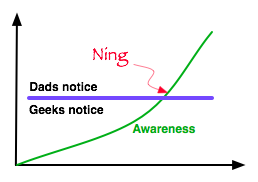 If you Google around enough, with diligence and creativity in your search terms, plus a dash of willingness to check out page 12 of the results, you just might find some value provided by your government.
If you Google around enough, with diligence and creativity in your search terms, plus a dash of willingness to check out page 12 of the results, you just might find some value provided by your government.
For example, I've been trying to spruce up the overgrown, dreary and downright treacherous shrubs, bushes and vines littering my yard. Using the pick-axe to uproot shrubbery is fun and easy, sure, but then there's a gaping hole, a void, a cavity of hope waiting to be filled. Plant guidebooks seem to either be jinormous compendiums of every plant, fungus or moss known in existence, or else they trot out the same few dozen marigolds, impatiens and dogwoods.
Designing a garden around the house requires a knowledge of the space, sunlight, water, drainage and soil. Without an eye towards color, blooming and size, the results may possibly be healthy, but boring and mundane.
I know my yard. This area is sunny. That area is shady. The dogs poop in that corner. And in that other one, too. This bed doesn't get much rain.
Knowing my constraints, now I must fill the emptiness. With color. That blooms at the appropriate time. Joy! Even more constraints.
Enter the USDA. Established in 1839 as the Agriculture Division, it's been collecting data ever since.
Their soldiers on the ground, in the fields and forests, steadfastly recording the plants they witness everywhere, have compiled a database of over 89,000 plants seen in the United States. While a nice online search form is available, results can be delivered not only in HTML, but also as slightly-ugly yet still useful comma-separated values.
The data includes what you'd expect, including the entire chain of Latin words to precisely describe the plant, along with its common name, of course. The data also includes, for some of the plants, information that is immediately useful to someone attempting to populate his yard. Commercial availability, US nativity and invasive status, the season and color of bloom. All categorized by the states in which the plants can be found.
Download the 17mb CSV results from a rather large query, slice, load into a database, swizzle and serve over ice.
Living in North Carolina and finding a purple flower that blooms in the spring for my partial-shade bed just got a whole lot simpler.
 Did you know that November 14th is GIS Day?
Did you know that November 14th is GIS Day?
 Attacker: Microsoft
Attacker: Microsoft




 In a
In a  Today, the Man In Brown showed up, and dropped off some boxes.
Today, the Man In Brown showed up, and dropped off some boxes. Today
Today  This has been an interesting week in terms of networking. Actual TCP/IP networking, that is. First, there's the normal jumping between the hotel and office networks. The hotel, nicely enough, was completely free. The office was also free, after entering what seemed to be an 480-character security key and avoiding the other 9 visible secure WAPs in the vicinity of my desk. One was at least amusingly named "Magical Monkeys".
This has been an interesting week in terms of networking. Actual TCP/IP networking, that is. First, there's the normal jumping between the hotel and office networks. The hotel, nicely enough, was completely free. The office was also free, after entering what seemed to be an 480-character security key and avoiding the other 9 visible secure WAPs in the vicinity of my desk. One was at least amusingly named "Magical Monkeys".